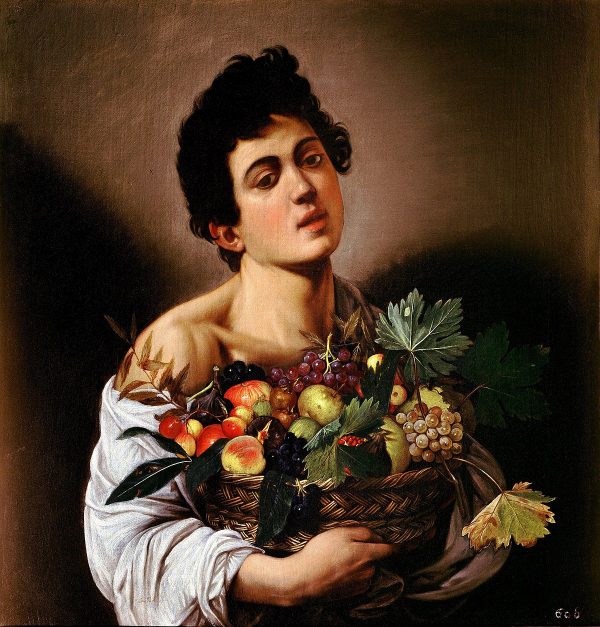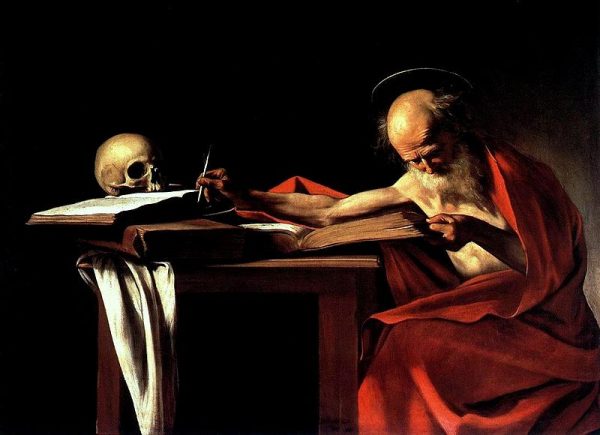[alert type=alert-white ]Please consider making a tax-deductible donation now so we can keep publishing strong creative voices.[/alert]
Although Los Angeles boasts four art museums with extensive collections of Western European art, their galleries offer few masterpieces. There are some blue chip names dispersed between The Getty, Hammer, Huntington, LACMA, and Norton Simon; however, we seldom see masterpieces from other museum collections on exhibition here because LA’s art museums do not possess “borrowing collateral.” Simply said, another museum will lend a masterpiece if it knows that it, someday, will be able to borrow a work of similar distinction. Currently, there is an exhibition of Michelangelo’s drawings at The Metropolitan Museum of Art drawn from fifty public and private collections. The Met has virtually unbridled borrowing power due to its vast and extensive collections which, on occasion, become available to be seen in other museums.
Major American public and private collections of Western European art were formed in Boston, Chicago, New York, Philadelphia and Washington in the late 19th and early 20th centuries when the international art market was flush with outstanding examples of top of the line historical works by acknowledged European masters. In this sense LA will be permanently behind the curve in collecting Western European masterpieces because they seldom appear on the market or at auctions. So, it is cause for celebration when three paintings – masterpieces – by Caravaggio are on public view in LA. For those of us enamored of Western European art, this is a special treat!



Rome’s Galleria Borghese, situated in the lush Borghese Gardens, hosts seven works by Caravaggio acquired by members of the Borghese family during the artist’s lifetime; they have remained in this collection for five centuries. The three paintings on exhibition at The Getty were acquired by Cardinal Scipione Borghese, a nephew of Pope Paul V, who knew Caravaggio personally and was one of his primary patrons.
Michelangelo Merisi da Caravaggio was born in Milan in 1571 and died in Porto Ercole in 1610. He was active in Rome, Naples, Malta and Sicily between 1593 and 1610, and is considered to be a progenitor of the Baroque style which dominated Western European art in the 17th century. In his own lifetime Caravaggio was considered enigmatic, fascinating, rebellious and dangerous. He burst upon the Rome art scene and thereafter never lacked for commissions nor patrons. However, his personal lifestyle manifested irrational behavior. He was known to engage in public fights and arguments. In 1606, he killed a man and fled from Rome; he was later engaged in spontaneous public brawls in Naples and Malta.
His personal behavior stands in stark contradiction to the genius exhibited in his paintings. They are exquisite examples of dramatic realism executed with absolute mastery. He preferred to paint his subjects with all their natural flaws and defects instead of creating idealizations. The three paintings from the Borghese Gallery on view at The Getty represent a brief synopsis of his oeuvre. Boy with Basket of Fruit, (ca. 1593-94) dates from his early years in Rome. Here, he depicted the horticultural details of each item of fruit with accuracy. This painting lacks the bravura of his later work. His Saint Jerome, about 1605-6, is more typical of his mature style. It is a studied representation of this Fourth Century AD religious scholar who traveled extensively in Europe and the Middle East. David with Head of Goliath is a somber painting dating from the end of his career. Here again, we see a subject treated with dramatic lighting and exaggerated detail. Caravaggio represented a decapitated Goliath with his own physiognomy, purportedly in penance for his having committed a murder in 1506.
16th century Rome was the center of Italy’s cultural universe. Caravaggio began to dominate the scene as one the most revolutionary artists of his day. Introducing dramatic light and gesture to his paintings, he abandoned the conventions that had guided artists of the High Renaissance during the previous century. Among them Leonardo, Michelangelo and Raphael, created idealized human and religious experiences. Perhaps, not an exaggeration, Caravaggio can be said to almost single-handedly have created the 17th century Baroque style of dramatically highlighted representation that became universal across Western Europe.
He caught the attention of Cardinal Francesco del Monte who commissioned him, at age 24, to paint frescoes for the church of San Luigi dei Francesi. In its Contarelli Chapel, Caravaggio’s realistic naturalism appeared in three scenes in which he created the life of St. Matthew. These works caused public outcry because of their dramatic realism. Despite, or perhaps because of this severe criticism, his reputation was enhanced. Unfortunately at about the same time, Caravaggio had many encounters with the law. He was imprisoned for several assaults and for killing an opponent after a disputed score in a game of court tennis. Caravaggio fled from Rome and kept moving from one hiding place to another. He reached Naples, probably early in 1607, and painted there for a time, hopefully awaiting a pardon by the Pope. A dramatic change in his painting style emerged which could have reflected Caravaggio’s desperate state of mind.
Early in 1608 Caravaggio went to Malta and was honored as a celebrated artist. Fearful of pursuit, he continued to flee for two more years; however, his paintings of this period were among the most significant of his career. After receiving a pardon from The Pope, he was wrongfully arrested and imprisoned for two days. A boat that was to take him to Rome left without him, taking his belongings. Misfortune, exhaustion, and illness overtook him as he helplessly watched the boat depart. He collapsed on the beach and died a few days later on July 18, 1610. Despite his personal misfortunes, his art stands on its own and remains, after five centuries, among the canons of 17th century Italian art.
This exhibition, with sponsorship by the Roman fashion house Fendi, focuses attention to the recently established Caravaggio Research Institute located at the Galleria Borghese. Its purpose is to create a digital platform which will become a primary international reference for study of the artist.
(Top image: Galleria Borghese, Rome, housed in the former Villa Borghese Pinciana)
